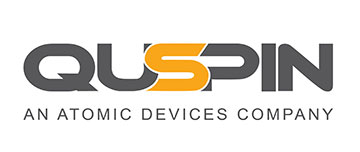![]()
[Image: Courtesy of Vishal Shah]
Vishal Shah is the founder and CEO of QuSpin, Colo., USA.—a startup that specializes in atomic devices such as optically pumped magnetometers. OPN spoke with Shah about his career path and his early-career choice to found his own company.
To read more about entrepreneurship as a career path, check out “Pursuing an Entrepreneurial Vision,” OPN, October 2019.
You received your Ph.D. in atomic physics in 2007 and founded QuSpin just five years later. What inspired you to start QuSpin?
After finishing my Ph.D., like many others, I hoped to find an academic job. I did not intend to become an entrepreneur. To this end, I labored on as a postdoc at Princeton University for two years, hoping to someday drive my own independent research.
Despite greatly enjoying university research environment, I was discouraged by what I perceived as a strong disconnect between academia and the real world. I learned that there is another path, entrepreneurship, that fully bridges this gap.
Despite its inherent risks, I found potential rewards such as unlimited scientific and personal freedom too alluring. I also found that, compared with chasing high-impact-factor journals, it is more satisfying when laboratory research makes an actual real-world impact, and entrepreneurship is a very promising way to make that happen.
What does QuSpin manufacture?
Initial results from my own graduate research, and from other prominent scientists in atomic physics, indicated that it might be possible to develop a new type of hyper-sensitive magnetic field sensor, which in turn would lead to an advanced, noninvasive brain scanner that outperforms other technologies.
After five long years, we have finally succeeded in building (as well as commercializing) this sensor. It will take a few more years to finish developing the ultimate brain scanner. After that, we will have to go through the FDA and cross several other barriers before our brain scanners are widely available in hospitals and clinics worldwide.
Initial results from small-scale prototypes built with our sensors and published in journals like Nature by independent neuroscientists are promising.

[Image: QuSpin]
You received funding from NIH to start QuSpin. What was the process like?
The biggest hurdle in starting any entrepreneurial venture is, of course, raising capital. After my postdoc, to better prepare myself for entrepreneurship, I took up a job as a research scientist in industry. I worked hard by day, and then even harder by nights and weekends planning my future venture. I built a strong vision that I could sell to Small Business Innovation Research (SBIR) reviewers. I also honed grant writing skills, learned how to build ultra-low-noise analog and digital electronics, and learned CAD designing and other skills that I knew I would need if my venture was eventually funded.
Around two years and eight rejected grant applications later, a small six-month NIH Phase I SBIR grant (US$200k) was finally approved, and with that, I was finally able to launch QuSpin. Thanks to advanced planning, we successfully executed the Phase I project, and then several follow-on Phase II grants were approved.
Did you ever consider going another route, such as venture capital (VC)?
The U.S. government is among the world’s biggest VC firms, and somewhat unbelievably, it funds high-risk/high-value scientific ventures with zero strings attached through the SBIR program.
The primary goal of a VC firm is to make money—a perfectly reasonable goal. Despite my own firm belief in the technology and its groundbreaking potential, due to the project’s complexity, I could not come up with a convincing pitch to generate substantial return on investment in a realistic timeframe; therefore, I never approached a VC. I believe SBIR caters to this exact segment of entrepreneurs.
After seven years, QuSpin has grown to fifteen fulltime employees, and aside from federal research grants, we generate considerable revenue from piecewise commercialization of our technology. While we don’t rule out obtaining VC funding in the future, we feel bootstrapping and staying firmly grounded may be a more stable approach to growth.
What advice would you give someone interested in starting an optics and photonics business?
Do not focus on technology. Few people, other than our friends in academia, care about the core technology. Instead, focus on addressing the market need.
We often tie ourselves to technical solutions that we may have helped develop at some point in our career. The best thing to do is to break such ties and choose technical solutions instead that best address market needs.
Also, prepare for a long hard battle. Silicon-Valley–type overnight success rarely applies to hard sciences. Even if a venture fails, the adventure and experience you will gain from it will always be worth it.
